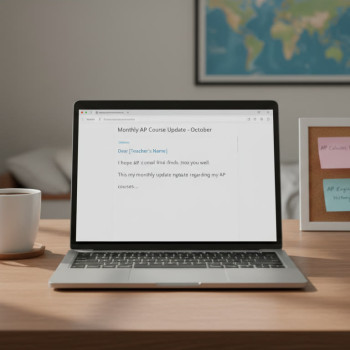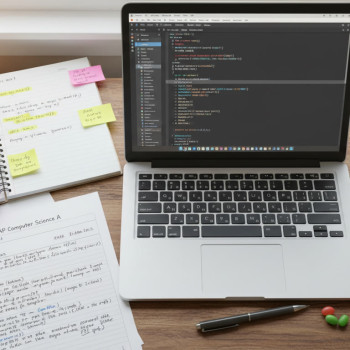Why Mixed MCQ Sets Matter for AP Quant Courses
If you’ve ever stared at a mixed set of multiple-choice questions (MCQs) during an AP exam and felt your brain do somersaults, you’re not alone. Quantitative AP courses — like AP Calculus, AP Statistics, AP Physics, and AP Chemistry — test more than subject knowledge. They test stamina, pattern recognition, strategic pacing, and the ability to switch mental gears fast. Mixed MCQ practice trains exactly those skills.
This blog is a friendly, practical guide to managing your time when practicing mixed MCQ sets. Whether you’re aiming for a 4 or 5, or simply want to reduce the panic when a question type you didn’t expect shows up, the techniques here are designed to be realistic and actionable.

First Principles: What Time Management Really Means
It’s not just about the clock
Good time management on a mixed MCQ set is the sum of three things: planning, practice, and real-time decision-making. Planning creates the structure (how long for each section? which question types first?). Practice builds the muscle memory and mental templates. Real-time decisions — like whether to skip and return — are the tiny calls you make under pressure that add up to big score differences.
Why mixed sets are harder than focused practice
When you practice only one topic at a time (say derivatives or probability), you’re in a single mindset. But exams throw mixed problems at you. Mixed sets demand frequent context switching, which has a cognitive cost: it slows you down and increases error rates if you’re not trained for it. The goal is to reduce that cost so switching becomes near-instant.
Framework: A 3-Phase Approach to Mixed MCQ Training
Think of your preparation as three phases that you cycle through repeatedly: Familiarization, Timing, and Simulation. Each phase has its purpose and specific drills.
Phase 1 — Familiarization (Build the Toolkit)
- Practice small groups (5–10 questions) focused on quickly identifying problem types and key signals.
- Create quick-reference checklists for common MCQ traps (unit errors, misreading the question, common algebraic slips).
- Annotate formulas and quick steps in your problem book so recognizing patterns becomes fast.
Phase 2 — Timing (Pacing Muscle)
Start timing from the beginning but be generous at first. The aim is to find comfort with switching between tasks. Slowly reduce time allowances until you reach exam-like constraints.
- Use micro-timed drills: 10 questions in 15 minutes, then 20 questions in 30 minutes.
- Track how long different question types take on average; build a personal timing map (you’ll see this in the table below).
Phase 3 — Simulation (Full Exam Conditions)
Do full-length mixed MCQ sections under exam conditions. No notes, no phone, strict timing. After each simulation, do a calm, structured review — note not just errors but timing irregularities and decisions you made (when you skipped or guessed).
Concrete Strategies for Running Mixed MCQ Sessions
1. Start with a 3-pass approach
A 3-pass approach reduces time wasted on stubborn problems early and ensures you collect easy points first.
- Pass 1 — Quick wins: answer all problems you can solve in under 90 seconds each.
- Pass 2 — Medium effort: tackle questions that need several steps or a sketch (2–4 minutes).
- Pass 3 — Deep work: spend remaining time on the hardest problems.
2. Use a decision heuristic for skips
Adopt a clear rule like: if you’re not making headway in 2 minutes on easiest items or 4 minutes on medium items, flag it and move on. A consistent rule prevents emotional decision-making under time pressure.
3. Keep an answer-monitoring habit
Every 10–15 minutes, glance at how many questions you’ve answered. If you’re falling behind your target pace, adjust: accelerate on simpler items rather than rushing complex algebra where error rate will spike.
Practical Routines and Sample Timed Schedules
Below are sample session plans depending on the time you have. Use them as templates and tweak to fit your strengths and the course (Calculus vs. Statistics have different common time sinks).
| Session Length | Goal | Structure |
|---|---|---|
| 30 minutes | Focused pacing drills |
|
| 60 minutes | Work on 3-pass technique |
|
| 90–120 minutes | Full section simulation |
|
Sample micro-checklist to use during a timed session
- Do I recognize the problem type within 20 seconds?
- Is there a quick estimation or sanity-check shortcut? (Try it!)
- If calculations are long, can I simplify or approximate to narrow answers?
- Am I tracking time every 10–15 minutes?
Personal Timing Map: Track and Improve Your Averages
You should know roughly how long typical problems take you. The table below is a template you can use to track your averages by problem type after several practice sessions.
| Problem Type | Typical Time Range | Target Time | Drill Tip |
|---|---|---|---|
| Short Calculation / Quick Concept | 30–90 sec | 45 sec | Practice mental math and recognizing triggers. |
| Multi-step Algebra / Reasoning | 90–240 sec | 120–180 sec | Write concise steps and avoid needless expansion. |
| Graph Interpretation / Setup | 60–180 sec | 90 sec | Sketch quick labels; read axes carefully. |
| Probability / Combinatorics | 90–300 sec | 150 sec | Work backwards from answer choices when possible. |
Common Time-Sapping Pitfalls (and How to Fix Them)
Pitfall: Getting stuck on algebraic muck
When algebra balloons, you lose time and get mentally fatigued. Fix it by using estimation, back-substitution from answer choices, or simplifying assumptions (check later if assumption affects validity).
Pitfall: Not flagging questions to return to
Without a clear flagging system you’ll either waste time circling back aimlessly or skip too much and leave easy points. Use a two-symbol system on scratch paper: a quick star for ‘likely to come back’ and a question mark for ‘need deeper thought later’. Keep the star list short.
Pitfall: Re-reading the same text repeatedly
If you find yourself re-reading, underline the transformation step: what changes from given to asked? Then convert units or restate the question in one line — that often clarifies the path forward.
How to Review Mixed MCQ Sessions Effectively
Review is where practice becomes progress. Use a two-layer review: immediate and reflective.
Immediate review (first 24 hours)
- Re-work each missed question, but time yourself slightly less strictly to focus on understanding mistakes.
- Record whether the error was knowledge-based, calculation-based, misread, or timing-related.
Reflective review (weekly)
- Aggregate errors by type and track trends: Are arithmetic errors decreasing? Are certain subtopics still slow?
- Adjust practice: more mixed drills if switching is a problem, or focused drills if a content area is weak.
How to Make Mixed Practice Feel Less Random
Design sessions that intentionally mix problem sources and difficulty levels. A balanced set might include 40% quick-concept, 40% medium multi-step, and 20% complex synthesis questions. Over time, increase complexity share to simulate tougher exam conditions.
Rotation strategy
Rotate focus across days. For example: Monday — Calculus-heavy mixed set, Tuesday — Statistics mixed set, Wednesday — cross-discipline mixed set. This prevents adaptation to a single subject and mirrors exam unpredictability.
Real-World Examples and Mini Case Studies
Meet Maya. Two months out from her AP Calculus exam, she scored 70% on untimed mixed MCQ sets. She implemented the 3-pass approach, did micro-timed drills (12 questions in 18 minutes, three times a week), and built a personal timing map. A month later, she reduced average question time by 25% and felt calmer on full timed sections. Her checkpoints: consistent warm-ups, strict 2-minute skip rule, and weekly reflective reviews. The result: a steady climb from 70% to 88% in practice accuracy and a much calmer test-day experience.
Then there’s Jordan, who struggled with AP Statistics timing. He used back-substitution on multiple-choice probability questions and practiced visualization for distributions (sketching helps). He also used short 30-minute mixed sessions daily to avoid mental fatigue. His pacing improved and errors from misreading graphs dropped dramatically.
Tools and Aids That Help (Low-Tech to Smart)
- Analog timer or kitchen timer — visible and tactile to build awareness of the clock.
- Scrap paper with dedicated zones: left for calculations, right for answers and flags — keeps your workspace organized.
- Spreadsheet for tracking timing and error types — build your personal timing map here.
- Personalized tutoring (like Sparkl’s 1-on-1 guidance) — when you hit a plateau, an expert tutor can identify hidden timing drains and craft a tailored study plan to fix them quickly. Their tutors can also offer AI-driven insights to spot weak patterns and recommend targeted drills.

Weekly Plan Template: How to Fit Mixed MCQ Practice into a Busy Life
Here’s a practical week you can adapt. It balances mixed MCQ practice with focused content days and rest to prevent burnout.
| Day | Session Focus | Time | Notes |
|---|---|---|---|
| Monday | Mixed MCQ timed (short) | 30 min | 12 mixed questions, quick review |
| Tuesday | Focused content drills | 45 min | Tweak weak topics from last review |
| Wednesday | Mixed MCQ 3-pass | 60 min | 30 questions, full 3-pass |
| Thursday | Problem-Solving Workshop | 45 min | Work on hardest flagged problems |
| Friday | Micro-timed review | 30 min | Timed short burst + error log |
| Saturday | Full simulation | 90–120 min | Exam conditions, full review |
| Sunday | Rest and reflection | — | Light reading and passive review |
How to Measure Progress Beyond Score
Raw scores matter, of course, but pay attention to process metrics that show durable improvement:
- Average time per question for each problem type.
- Percentage of questions answered in Pass 1 vs. Pass 2 vs. Pass 3.
- Error taxonomy trends (less calculation error, fewer misreads, etc.).
- Stress and confidence levels during simulations — subjective but important.
When to Seek Extra Help
Use self-review for early issues. But if you’re not improving after several weeks, or your timing map shows persistent outliers in certain problem types, consider structured help. Personalized tutoring can accelerate progress because a tutor can diagnose timing drains you can’t see and craft a tailored plan — for instance, targeted drills to reduce algebra overhead or strategies to interpret graphs faster. Sparkl’s personalized tutoring and AI-driven insights are specifically designed to identify those patterns and recommend drills that fit your learning style.
Final Checklist: What to Do the Week Before the Exam
- Shift to maintenance: lighter mixed MCQ sets under strict timing, but avoid heavy new learning.
- Do 1–2 full timed simulations to keep pacing muscles active.
- Review your personal timing map and last 10 flagged questions — ensure you’re comfortable with recurring traps.
- Sleep, nutrition, and small routines: consistent sleep and short exercise sessions beat last-minute cramming.
- Have a simple exam-day plan: arrival time, materials, and a warm-up ritual (two quick questions to settle nerves).
Parting Thought: Momentum Beats Perfection
Mixed MCQ mastery is less about perfection on one question and more about consistent, deliberate improvement. Small, steady gains in timing, decision-making, and error reduction compound into large score improvements. Use the 3-phase approach, measure what matters, and iterate on your plan. When you hit a stall, a short series of tutoring sessions — for example, Sparkl’s personalized 1-on-1 support with tailored study plans — can provide the diagnostic clarity that turns weeks of slow progress into rapid gains.
Quick Action Plan (3 Things to Do Today)
- Set a 30-minute mixed MCQ timer and do a short 12-question drill with the 3-pass rule.
- Create a one-page timing map template and log your per-question averages.
- Pick one recurring error type to eliminate this week (calculation, misread, or method) and design a 20-minute daily drill for it.
You’ve got this. With clear structure, honest review, and the right help when you need it, mixed MCQ sets will stop being a scramble and start being a predictable part of your score-building routine. Good luck — and remember, steady practice beats frantic cramming every time.
























No Comments
Leave a comment Cancel